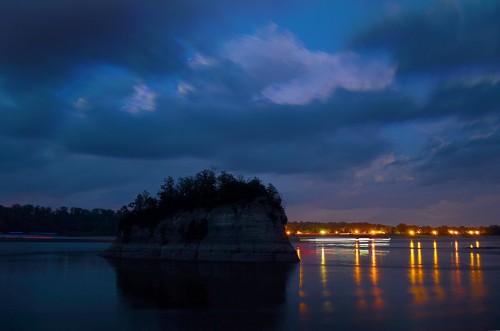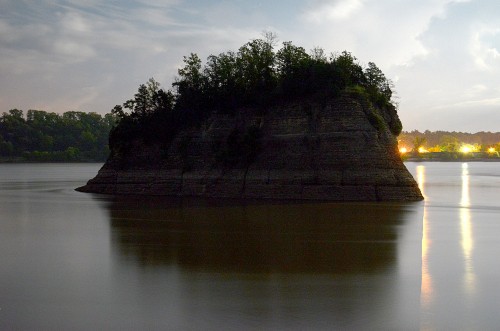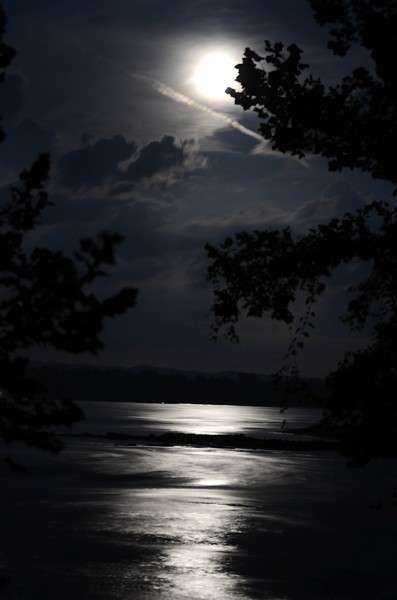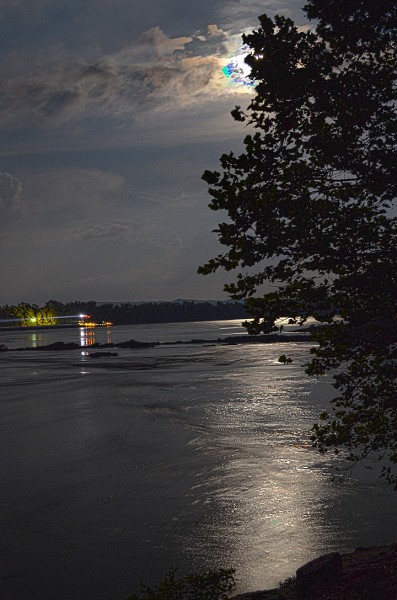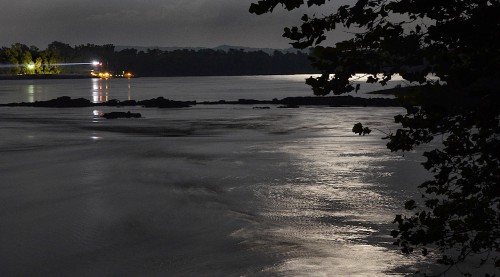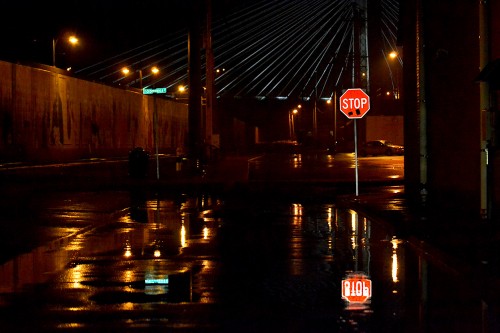 The rain was just slacking off when I got out of a meeting Wednesday night, so I decided to take a run downtown to see if there was any wet street art to be made. I saw something promising on Main Street, but couldn’t find a parking spot nearby. I decided to go down Water Street and make another pass at it.
The rain was just slacking off when I got out of a meeting Wednesday night, so I decided to take a run downtown to see if there was any wet street art to be made. I saw something promising on Main Street, but couldn’t find a parking spot nearby. I decided to go down Water Street and make another pass at it.
When I got to the intersection with Independence, the stop sign glared back at me. Nothing unusual about that, it’s supposed to reflect light when your headlights hit it at night.
That’s when I saw the reflection of the street sign and the stop sign in the water on the wet street. Fortunately, nobody was behind me, so I put it in back-up and angled into a parking space.
I got out of the car and slogged through the water until I thought I had the right angle.
The picture was gone
I’ve talked before about how you have to shoot as soon as you see a picture: if you don’t the magic might leak out. I figured that’s what had happened here: that in the 30 seconds it took for me to get out of the car, grab the camera and find the angle, maybe enough water had drained from the street to lose the reflection.
That’s when it dawned on me: REFLECTION. What had changed was that my headights were no longer hitting the signs, hence, there was no light to be reflected.
I got back in the car and changed from angle parking to aiming my lights down the street. I didn’t want to block the street, so I was still well off to the side. It was close, but not what I saw the first time.
There are no cars out
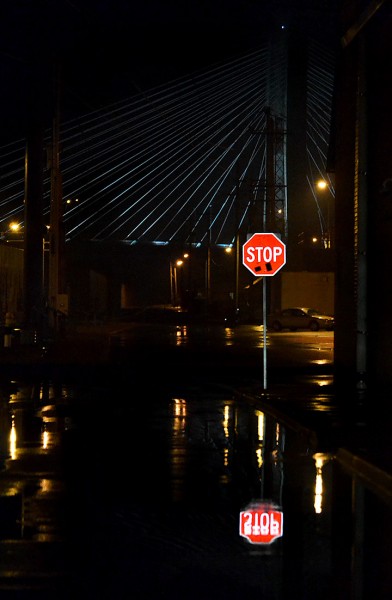 That’s when I realized that this is CAPE. There ARE no cars out on a rainy Wednesday night. I positioned my car in the travel lane and fired away. NOW I was seeing what I had seen behind the wheel.
That’s when I realized that this is CAPE. There ARE no cars out on a rainy Wednesday night. I positioned my car in the travel lane and fired away. NOW I was seeing what I had seen behind the wheel.
This was one of the situations where the photo probably would have been better if I had gone the HDR route, which takes multiple exposures, then combines them into one frame. There were several reasons why I didn’t do that:
So, why didn’t I use HDR?
- I don’t use HDR enough to be comfortable to setting the camera in the dark.
- It required me to drag my tripod out.
- My tummy was growling.
- It was still sprinkling. Those last three things violate my Retirement Contract where I don’t (A) Go hungry; (B) Get wet or (C) Lift heavy objects.
Other night weather photos
I’m a child of the night. I loved roaming the streets and alleys of towns after dark. After every cop in town had stopped my at least once, they tended to leave me alone.
Want to know why most car ads are shot with streets that have been sprayed with water? It makes them look cool. Here are a some of collections of night weather pictures.

